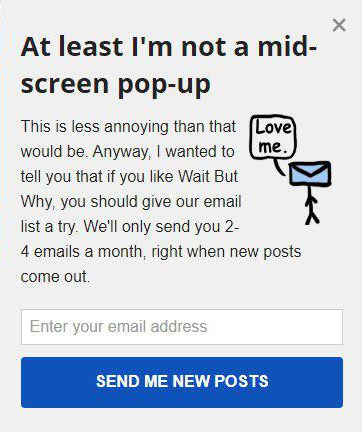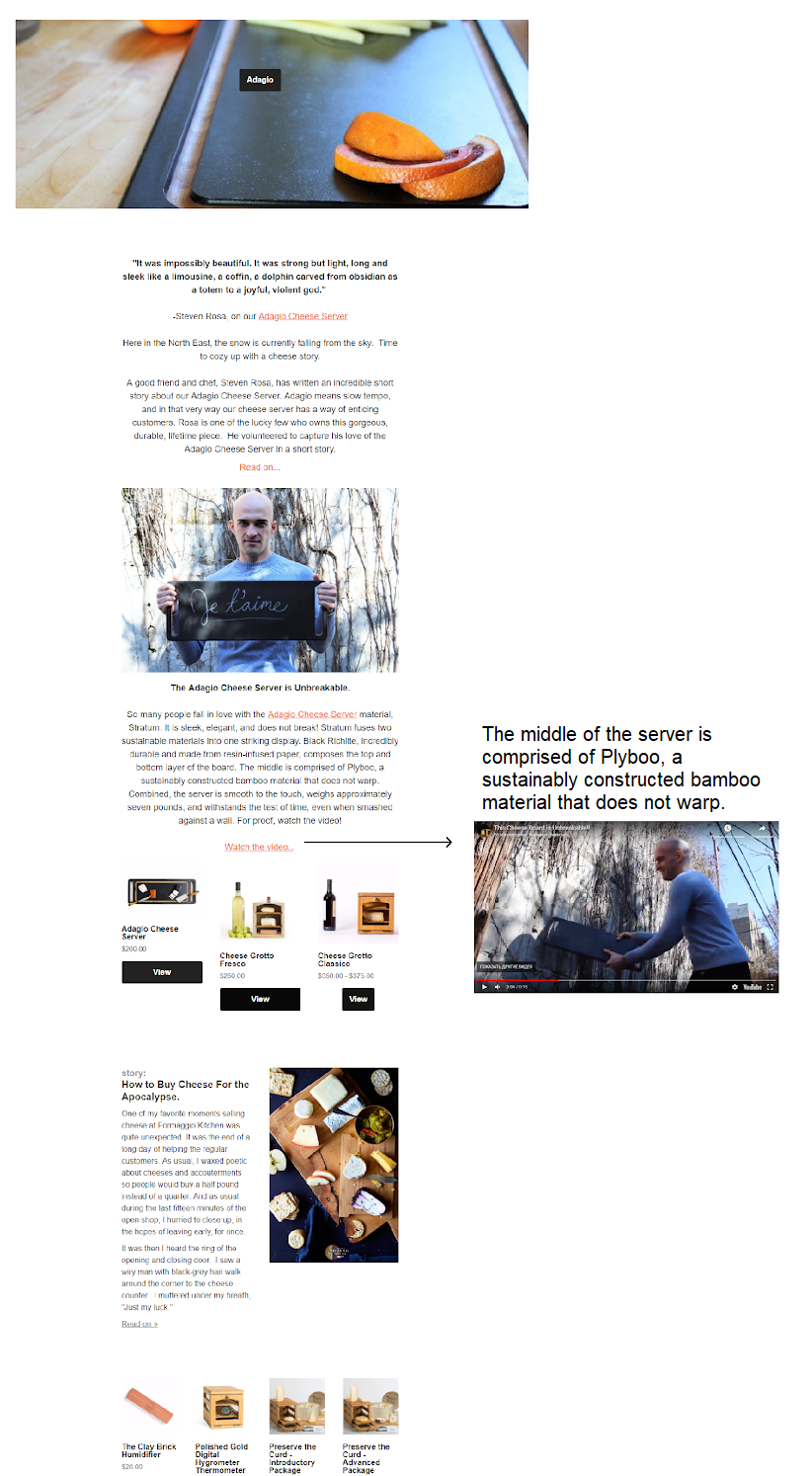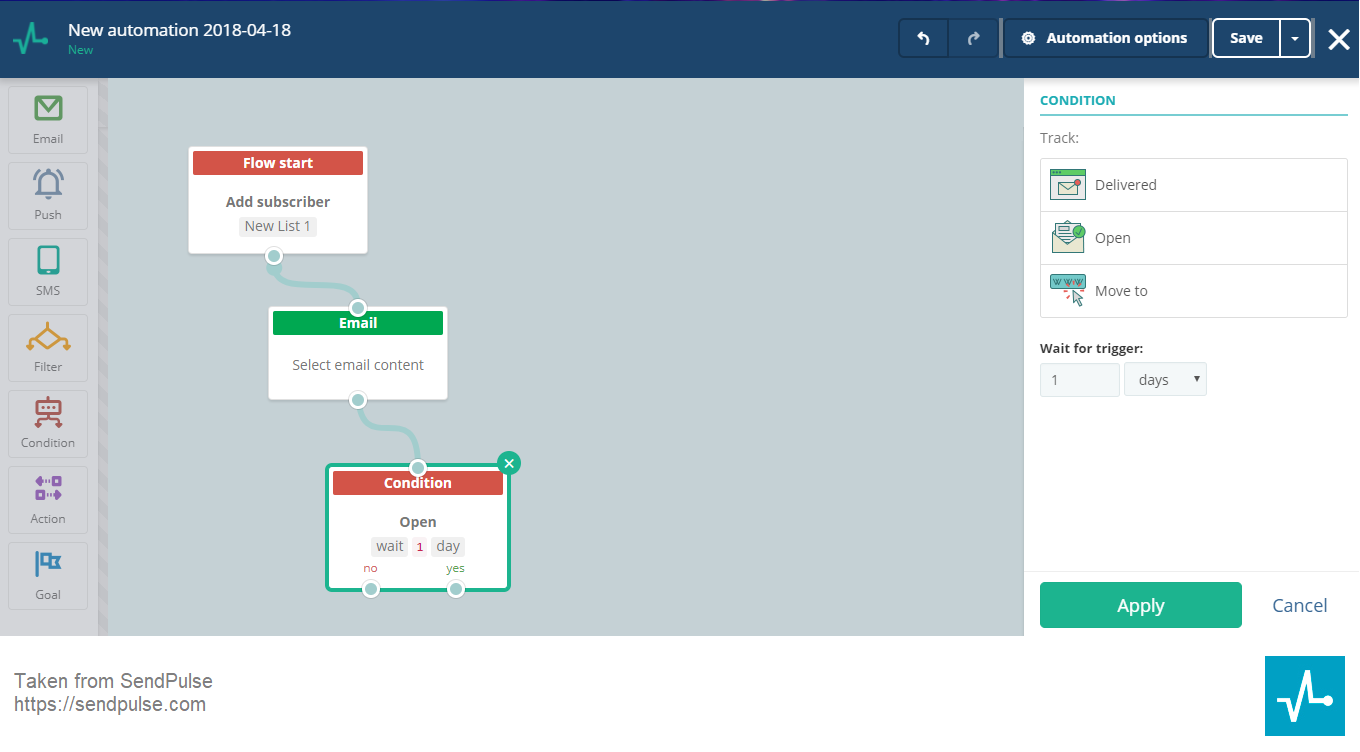For your email marketing efforts to bear fruit, it’s crucial to have a strategy. Apart from it, there are some steps you can take to run an effective email marketing campaign to grow your database, get more subscribers’ attention and engagement for increased revenue. These are the steps you’ll learn by the end of this article.
Find the right place for attracting potential subscribers
First of all, embed a subscription form into your website. Then think about other sources which could attract highly interested subscribers.
Place a subscription form to your blog
Users will definitely subscribe to additional information if they’re interested in the content you publish on your blog. Add a subscription form at the end of every article or to the sidebar keeping it fixed no matter where the user scrolls.
Make the subscription form area visible, and inform the users what kind of content they’re subscribing to (daily nutrition tips, weekly newsletter and so on).
Look how WaitButWhy uses a fixed subscription form. They have chosen a humorous way to inform the readers how many emails they are going to get.

Set a pop-up window at a desired landing
A pop-up window is usually placed on the main page. Go another way ‒ place it on the landing page. Say, a user spends a lot of time on a travel agency website, in particular, on a page dedicated to Greek resorts. By placing a subscription form on this page, you’ll have an opportunity to send out a targeted email with a relevant offer, for instance, “Best beaches in Crete: a traveller’s look.”
This is how you can do this in SendPulse:
- Choose the display condition: by a click, when scrolling to a particular part of the page or when leaving the page.
- In the field ‘show on pages’, specify the address of the page, where the pop-up window should be displayed.

Use various types of emails
Welcome emails
A welcome email flow is usually sent out after a sign-up. Use these emails to attract new subscribers straight away. Share popular articles on the blog, reviews of trendy products or a list of useful links.
For example, Figma, an online editor, includes four useful links into its welcome email: to the help center, video tutorials, forums and sample files. For a newcomer, it becomes easier to navigate the website and just to get started.

Newsletters
This type of emails is also called a digest. Newsletters usually consist of entertaining and educational content, including infographics, GIFs and videos. It is used to increase brand awareness, subscriber engagement and attract traffic to the website.
In one of its newsletters, Triathlete, for instance, provides some useful tips, shares new publications and informs about special offers.

Promotional emails
The main goal of this email is to sell by advertising brand’s new collections and flash sales. In your promotional emails, dwell on the benefits and offer a discount to encourage your subscribers to take a desired action. Keep in mind, 92% of users admit they decide to purchase from an email if there is a special offer inside.

Check out the Cheese Grotto’s promotional email about a cheese server. In this email, they write: “It’s sleek, elegant and does not break.” For proof, they add a video which shows the reliability test.

Triggered emails
Epsilon analyzed the effectiveness of triggered email campaigns and found out that their open rate is 67.9% higher while their click-through rate is 143% bigger compared to ordinary emails.
Trigger-based email is a message sent out automatically in response to a specific action. In SendPulse, for example, such action can be delivery, opening or click.

Apart from customers’ interaction with your email or behaviour on your website, automated emails can be also triggered by specific data. For example, Thrive Market sends out a special occasion email to the company foundation date. The email tells the story of the company’s progress for the three-year period, inviting to celebrate the date. Besides, subscribers are offered to get a 30% off their first order.

Re-engagement emails
In case subscribers don’t open your emails for a long time, create a separate segment for them and launch a reactivation email campaign. Fill the email with user’s memorable dates and personal achievements on the website, shopping ideas, selection of unique crafts, invitations to workshops, tutorials, or inspirational publications.
In the example below, Missguided offers free delivery, encouraging the subscribers to make the purchase.

Write catchy subject lines
According to statistics, 47% of subscribers decide whether to open an email or not based on the subject line alone. If the latter is boring, subscribers will simply ignore it. So, do not neglect this important element: it affects other valuable metrics.
Here are some principles to make your subject line work:
- Fear of missing out. Dwell on the time limit or product scarcity.
![]()
- Personalization. Make subscribers feel unique and appreciated by mentioning their name in the subject line.
![]()
- Humor. Create a relaxing vibe and set the mood.
![]()
- Pain points. State a problem and offer a solution.
![]()
- Curiosity. Tease a subscriber to open and read your email with an intriguing question or unfinished sentence
![]()
- Emoji. Make the subject line stand out.
![]()
Create captivating content
To keep the readers interested in the email campaign, choose various topics.
Here is a list of ideas for making your email content more appealing:
- Tips;
- Instructions;
- Life hacks;
- Gifts guides;
- Jokes;
- Success stories;
- Behind-the-scenes secrets;
- Contests;
- Webinars or workshops;
- Invitations to conferences;
- Videos;
- GIFs;
- Images.
As for images, creating and adding them to emails is a pure art. Pictures amplify the impression subscribers get from reading the email. See how well Homage managed to do it:

Find the best time to send your email
Getresponse’s recent report showed that Tuesday remains the most optimal day for emails to get clicked and opened. Meanwhile, the time depends on the audience’s activity and preferences.

To identify when your subscribers are most likely to open and click your emails, carry out your own A/B test.
Bottom line
So, let’s resume the tips on how to improve the effectiveness of your email campaigns:
- Embed a subscription form into your platforms to enlarge your mailing list.
- Send different types of emails based on your goals.
- Create smart subject lines to encourage subscribers to open your email.
- Make your email content interesting and diverse.
- Determine the best time for sending emails by conducting an A/B test.





